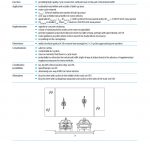Bicycles are extremely popular with policymakers at home and abroad at present. Encouraging bicycle use is regarded as an effective solution to accessibility problems and risks to health. Cycling (or more cycling) also makes a substantial contribution towards meeting sustainability targets. Furthermore, the many users are increasingly seeing the bicycle as a sustainable, healthy and reliable means of transport. This is evident from (for example) the persistently healthy volumes of bicycle sales (with the electric bicycle being particularly noteworthy) and the growth of bicycle use.
Nevertheless, people will only start using their bicycles more if the cycle infrastructure is in good order. Connections for cyclists have to be attractive and ensure their personal safety. Detours and delays must be kept to a minimum. Thus rendering careful planning of cycle networks and a solid design of facilities essential. Moreover, roads and paths for cyclists must be comfortable and safe for traffic. In all weather conditions. Consequently, in addition to a maintenance programme for road management, attention needs to be given to such matters as winter maintenance.
CROW has been publishing handbooks containing practical knowledge on cycle facilities since as far back as the early 1990s. It is partly down to these publications that cycling and cycle policy are still high on the agenda. Time and again, this ongoing attention to bicycles, as well as the additional interest in them in recent years, gives rise to new developments in terms of bicycles. Which explains why it became necessary to thoroughly revise the Design Manual for Bicycle Traffic from 2006.
The present, revised edition includes ‘new topics’, such as bicycle highways, forgiving cycle paths and roundabouts for cyclists (primarily referred to as the Zwolle roundabout). Furthermore, trusted measures and facilities are subjected to scrutiny again, sometimes with surprising results. Consider in this regard cycle lanes or bollards barring car traffic from cycle paths.
Just like its predecessor from 2006, this edition of the Design Manual for Bicycle Traffic is not a recipe book either; what it does present is a wide array of arguments, empirical data, ideas and tips which will assist the designer in affording the bicycle a full place in the traffic and transport system. As the title suggests, the content focuses on design aspects of bicycle traffic: cycle facilities. However, as no facilities are created without policy, the present Design Manual devotes ample attention to policy aspects of bicycle traffic. This also supersedes the Policy Manual for Bicycle Traffic (Beleidswijzer fietsverkeer) from the Dutch Bicycle Council (Fietsberaad).
Table of contents
1. The development of bicycle traffic
1.1 The importance of the bicycle
1.2 The history of the bicycle
1.3 The bicycle and government policy
1.4 The role of the bicycle
2. Cycle-friendly design
2.1 Policy as foundation
2.2 Cycle-friendly infrastructure
2.3 The cyclist as a measure for the design
2.4 Main requirements cycle-friendly infrastructure
2.5 Integrated designing
3. Basic data
3.1 Bicycle dimensions
3.2 (Design) speed, accelerating and braking
3.3 Stability, deviation and clearance
3.4 Bends and view
3.5 Inclines
3.6 Patterns in bicycle use
3.7 Fellow users of cycle facilities
4. Design of the cycle network
4.1 The basis of any design
4.2 Levels in quality
4.3 Requirements for the main cycle network
4.4 Establishing main cycle network
4.5 Bicycle highways
4.6 Recreational cycle network
5. Road sections
5.1 Function, design and use
5.2 Requirements for a road section
5.2.1 Directness
5.3 Solitary cycle paths and cycle/moped paths
5.4 Bicycle traffic and motorized traffic within built-up areas
5.5 Bicycle traffic and motorized traffic outside of built-up areas
5.6 Special situations
6. Junctions
6.1 Function, design and use
6.2 Requirements for a junction
6.3 Junctions according to road type
7. Implementation, maintenance and furnishings
7.1 Road surfacing
7.2 Verges and plants
7.3 Lighting
7.4 Signage
7.5 Personal safety
7.6 Other facilities
8. Evaluation and management
8.1 Inspecting and evaluating bicycle connections
8.2 Inspecting surfacing for cyclists
8.3 Measures in the case of work in progress
8.4 Winter maintenance for the benefit of cyclists
Design sheets










